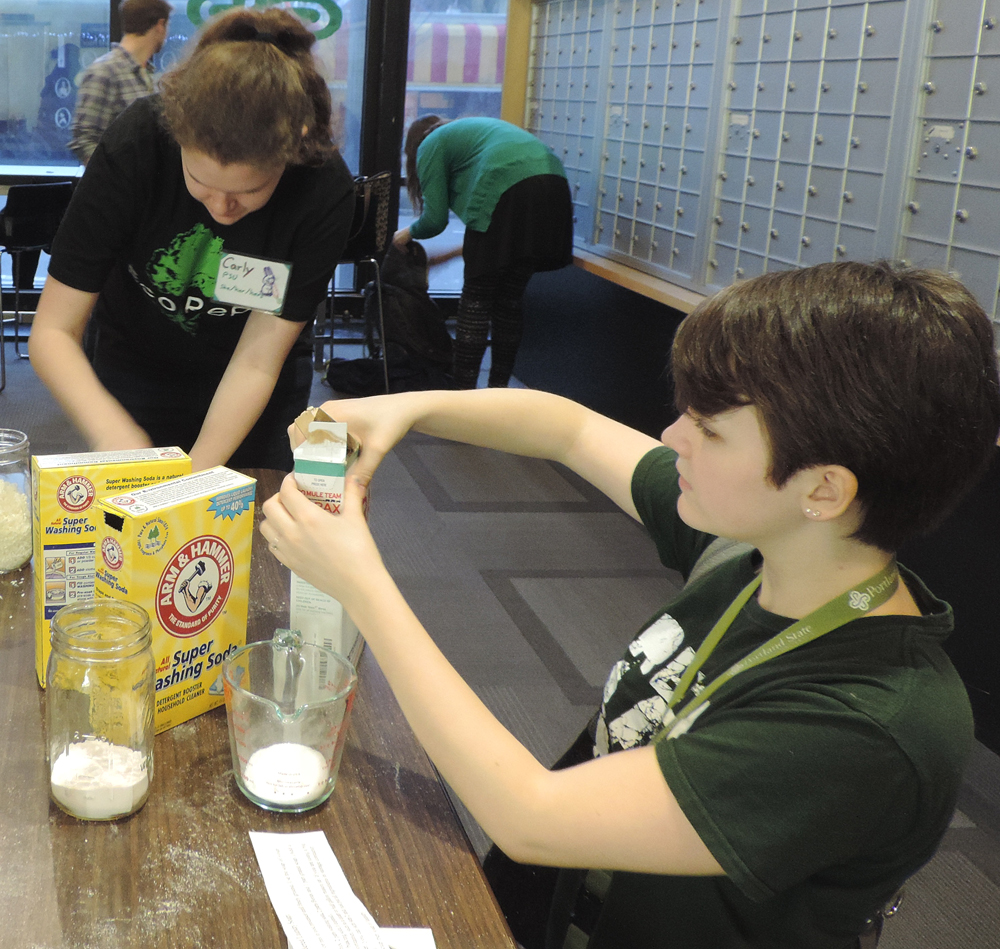Kelly O has made a name for herself in the Pacific Northwest shooting photos for Seattle’s The Stranger. Famous for her column “Drunk of the Week,” she currently has a show running at the IGLOO Art Gallery entitled Floater.
Note from the (drunk) underground
Kelly O has made a name for herself in the Pacific Northwest shooting photos for Seattle’s The Stranger. Famous for her column “Drunk of the Week,” she currently has a show running at the IGLOO Art Gallery entitled Floater that brings together new and old work in a celebration of alternative lifestyles and the male form.
Damien Gilley and Bryon Schroeder started IGLOO two-and-a-half years ago with plans to make it a space that focused a lot on conceptual art. Currently, the gallery is still headed up by Gilley and Schroeder, with the addition of Christine Taylor, a local photographer, artist and teacher who lives at the gallery, serving as a literal artist-in-residence and additional curator.
Taylor’s rent serves as a main source of financial backing for the space. Those involved with the gallery have intentionally tried to steer away from any kind of outside financial dependence and have never sought to make money off the gallery in an effort to preserve their independence and authenticity.
“We’re intentionally not trying to make money because we believe we’ll be able to be more authentic in our choices for artists,” Taylor said.
Kelly O, who considers herself to be first and foremost a designer, has shown at the gallery before. Floater is a combination of her works and a documentary by Mark Escribano called The Super Noble Brothers, a film that follows the lives of three brothers who have deeply invested their lives in collecting rare records and creating art.
Escribano’s work, like Kelly O’s, is a celebration of alternative lifestyles and the creative process.
“The film is really important to me to show because I feel like it represents the reality for many creative people who choose to live a creative life and be a creative professional. It’s not easy,” Taylor said. “We often hear the stories about people who go on to become famous. We don’t often get access to those who don’t become famous.”
Kelly O’s work manifests the alternative lifestyle in a different life. For anyone familiar with her work as a columnist for The Stranger and her various shoots for publications like VICE and SPIN, her personal style is one of spontaneity.
“I’m not really a studio photographer, I guess,” Kelly said. “I do a lot of things sort of off the hip and on the fly.”
The photographs in Floater are all from outtakes or other random shots Kelly picked up over the years in her work as a photographer.
“They’re all incidental shots,” Kelly said. “They’re all just outtakes or shots that I just had from shooting other things…I don’t really like posing people…I’ve had a few studio jobs and I have a really hard time posing people. I do it…but it’s really hard for me because I’m used to just trying to capture what’s already happening and capturing that realness is what I really appreciate in photography.”
This realness is very evident in her photos, a lot of which are color-saturated, candid shots of people in odd predicaments.
“[‘Drunk of the Week’] has influenced [my work] not in that I only shoot drunk people, but going someplace, I’ll sit and watch and just sort of be a fly on the wall and I wait for something,” Kelly said. “I think that’s sort of the way I photograph things.”
An overarching theme in Kelly O’s work has been the prominence of men in her photographs, something that can be seen in the latest show—which is entirely about men. As an artist, Kelly has gone out of her way to explore the male figure in ways that many other artists have neglected to do.
“I feel like a lot of photographers are really focused on women, they’re constantly objectified in advertising and just all sorts of images,” Kelly said. “People don’t really turn the camera on guys as much in that way in that sexy campy way.”
Whether she’s shooting drunk people, musicians or unsuspecting people on the street, Kelly’s work remains a unique snapshot into the Northwest underground and a sub-culture of creative people living alternative lives.



